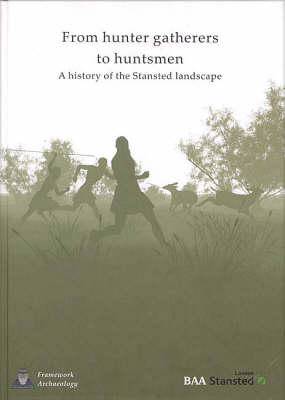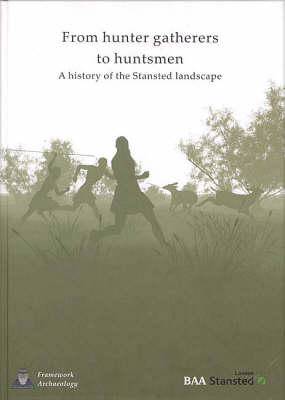
Je cadeautjes zeker op tijd in huis hebben voor de feestdagen? Kom langs in onze winkels en vind het perfecte geschenk!
- Afhalen na 1 uur in een winkel met voorraad
- Gratis thuislevering in België vanaf € 30
- Ruim aanbod met 7 miljoen producten
Je cadeautjes zeker op tijd in huis hebben voor de feestdagen? Kom langs in onze winkels en vind het perfecte geschenk!
- Afhalen na 1 uur in een winkel met voorraad
- Gratis thuislevering in België vanaf € 30
- Ruim aanbod met 7 miljoen producten
Zoeken
From Hunter-Gatherers to Huntsmen
A History of the Stansted Landscape
Nicholas Cooke, Fraser Brown, Christopher Phillpotts, Framework Archaeology
€ 33,45
+ 66 punten
Omschrijving
The expansion of Stansted Airport provided an opportunity to investigate a large area of clay plateau, typical of the north-west Essex landscape. The area was a focus for hunter-gatherer activity as early as the Palaeolithic period, and was first settled by small farming communities in the Middle Bronze Age. From the Middle Iron Age onwards, increasing settlement and population density led to the enclosure of the landscape. Farming and settlement concentrated on the more fertile river valleys and the slopes of the heavily wooded plateau. The Romano-British period saw a decline in the rural population, whilst increasing agricultural intensification led to the first systematic farming of the clay plateau. Woodland regeneration in the post-Romano-British period is clearly demonstrated in documentary sources. Indeed, much of the history of the Saxon and medieval settlement of the area concerns the relationship between agricultural expansion and the surrounding woodland, whilst deer parks such as Stansted Park allowed landowners to demonstrate their mastery of the landscape and its wildlife. This book, along with its accompanying CD-ROM, presents the results of these excavations, allowing the reader to explore both broader historical themes and the minutiae of individual sites, features and finds. The results of earlier work in the area are integrated, providing a coherent historical narrative of human inhabitation.
Specificaties
Betrokkenen
- Auteur(s):
- Uitgeverij:
Inhoud
- Aantal bladzijden:
- 344
- Taal:
- Engels
- Reeks:
Eigenschappen
- Productcode (EAN):
- 9780955451911
- Verschijningsdatum:
- 19/02/2008
- Uitvoering:
- Hardcover
- Formaat:
- Genaaid
- Afmetingen:
- 217 mm x 303 mm
- Gewicht:
- 1376 g

Alleen bij Standaard Boekhandel
+ 66 punten op je klantenkaart van Standaard Boekhandel
Beoordelingen
We publiceren alleen reviews die voldoen aan de voorwaarden voor reviews. Bekijk onze voorwaarden voor reviews.









